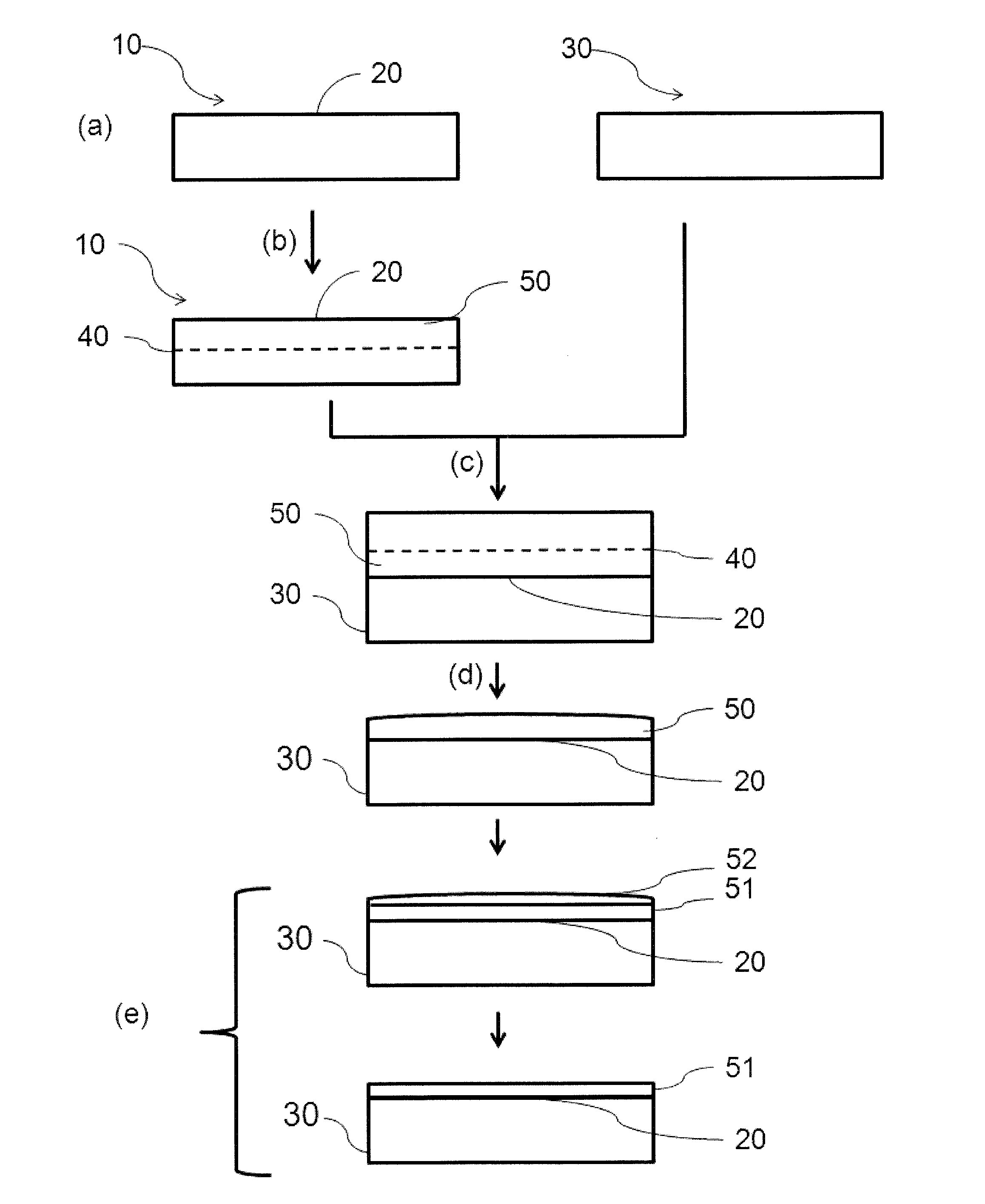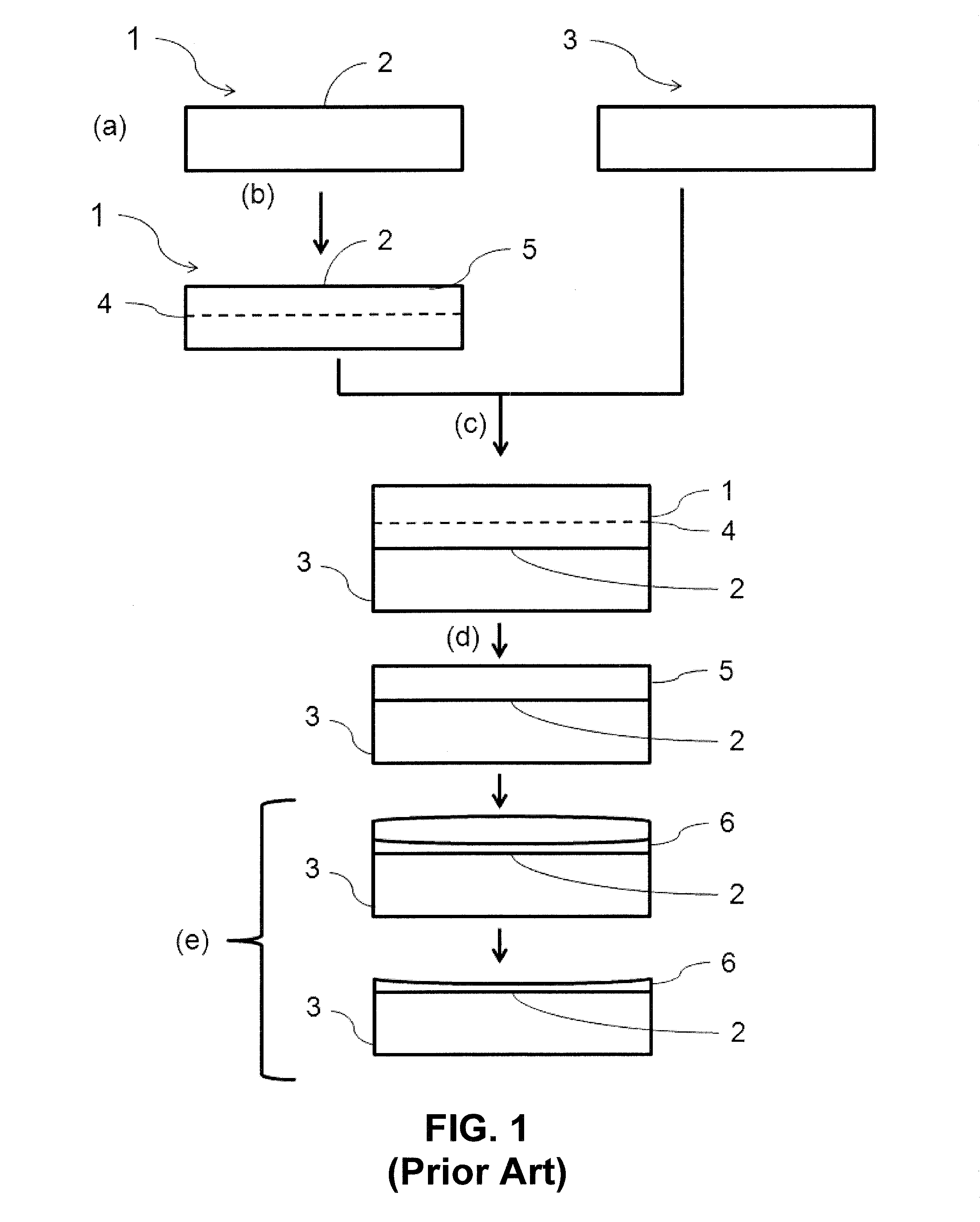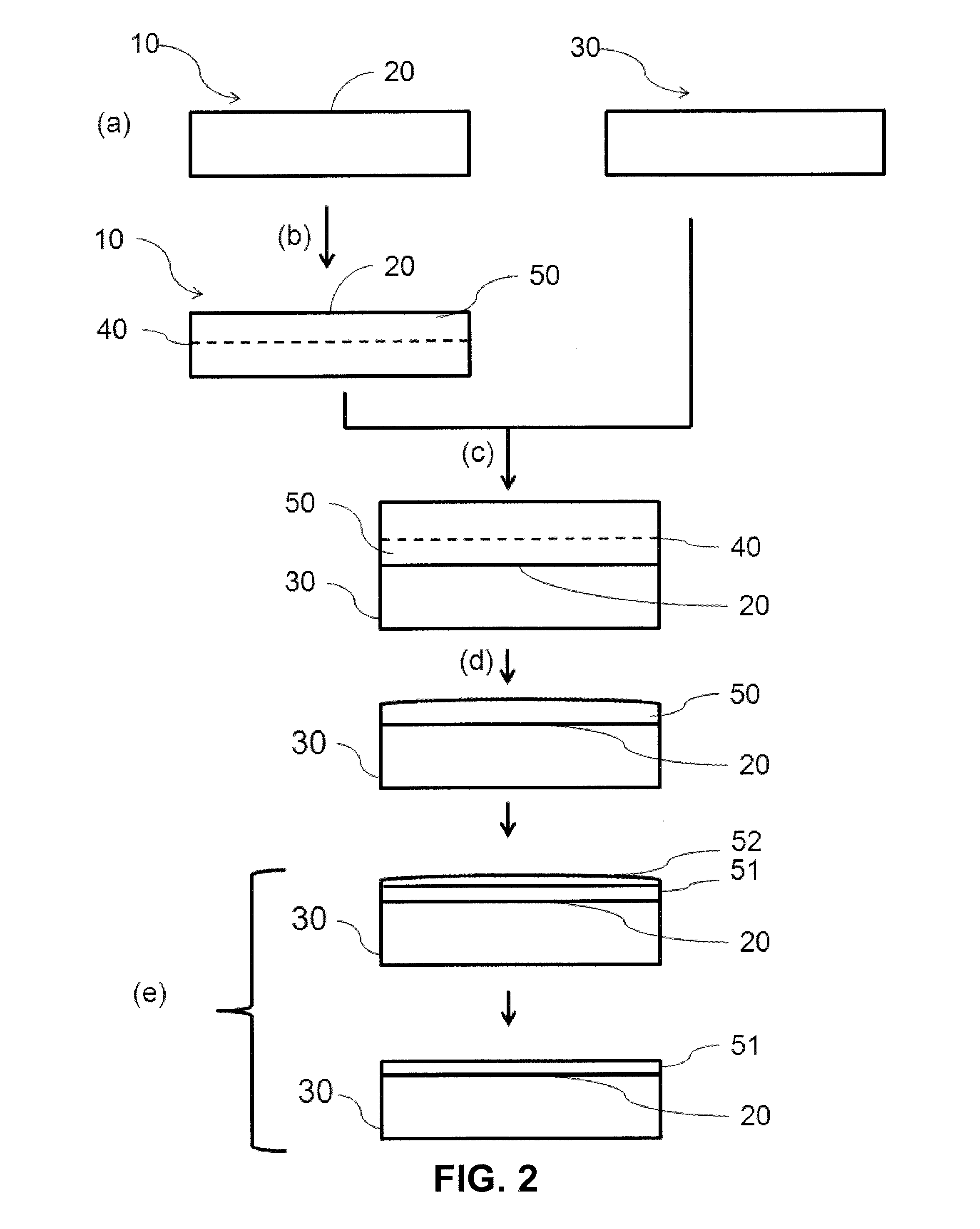Method for producing a composite structure
a composite structure and manufacturing method technology, applied in the direction of basic electric elements, semiconductor/solid-state device manufacturing, electric devices, etc., can solve the problems of difficult control of the thickness of the thinned working layer b>6/b> on the conclusion of all the stages of the manufacturing process, and achieve the effect of reducing the thickness
- Summary
- Abstract
- Description
- Claims
- Application Information
AI Technical Summary
Benefits of technology
Problems solved by technology
Method used
Image
Examples
first embodiment
of Stage b)
[0080]According to a first embodiment, the formation of the zone of weakening 40 is carried out by implantation of at least one of the species chosen from: hydrogen ions or helium ions. The total dose of the implanted species is nonuniform over the extent of the zone of weakening 40 and the nonuniformity of the dose of the implanted species is appropriate for generating the nonuniform thickness profile of the working layer 50 on conclusion of the fracturing stage d).
[0081]The term “dose of implanted species” is understood to mean the amount of implanted species per unit of surface area of the zone of weakening 40. The dose of implanted species is measured in atoms per cm2.
[0082]The implantation stage is advantageously carried out by a single wafer implant device. In contrast to batch wafer implant devices, a single wafer implant device makes it possible to implant a nonuniform dose of species over the whole of the extent of the zone of weakening 40.
[0083]It has been found...
second embodiment
of Stage b)
[0093]According to a second embodiment, stage b) is carried out in two stages:[0094]First implantation of species: according to a first implantation energy, the dose of the first implantation of species being nonuniform over the extent of the zone of weakening 40.[0095]Second implantation of species: according to a second implantation energy lower than the first implantation energy, the dose of the second implantation of species being nonuniform over the extent of the zone of weakening 40.
[0096]The second implantation energy is greater than 90% of the first implantation energy. The dose of the first implantation of species and the dose of the second implantation of species are complementary over the whole of the extent of the zone of weakening 40. The nonuniformity in the dose of the first implantation of species and the nonuniformity in the dose of the second implantation of species are appropriate for generating the thickness profile of the working layer 50 on conclusio...
PUM
 Login to View More
Login to View More Abstract
Description
Claims
Application Information
 Login to View More
Login to View More - R&D
- Intellectual Property
- Life Sciences
- Materials
- Tech Scout
- Unparalleled Data Quality
- Higher Quality Content
- 60% Fewer Hallucinations
Browse by: Latest US Patents, China's latest patents, Technical Efficacy Thesaurus, Application Domain, Technology Topic, Popular Technical Reports.
© 2025 PatSnap. All rights reserved.Legal|Privacy policy|Modern Slavery Act Transparency Statement|Sitemap|About US| Contact US: help@patsnap.com



